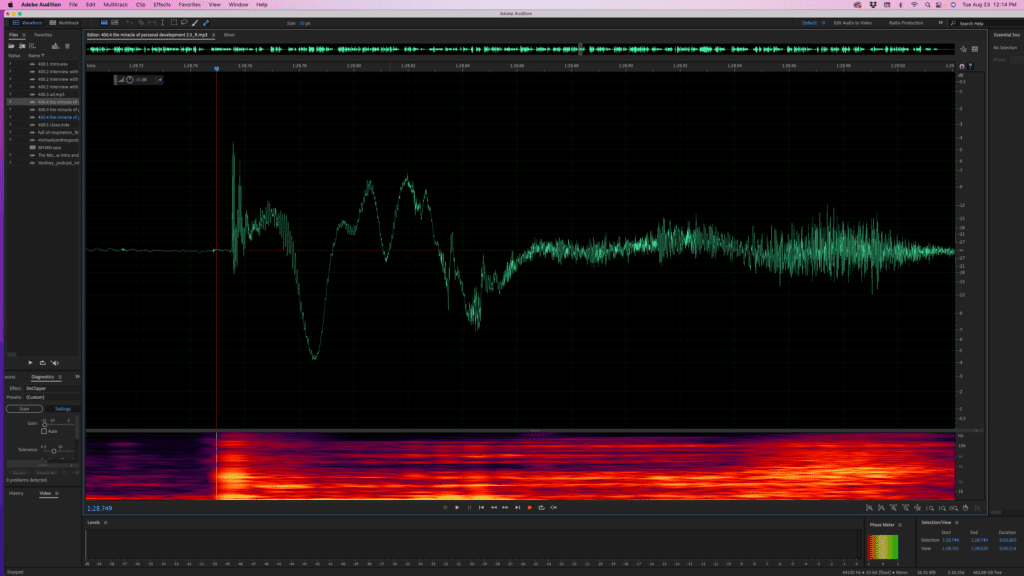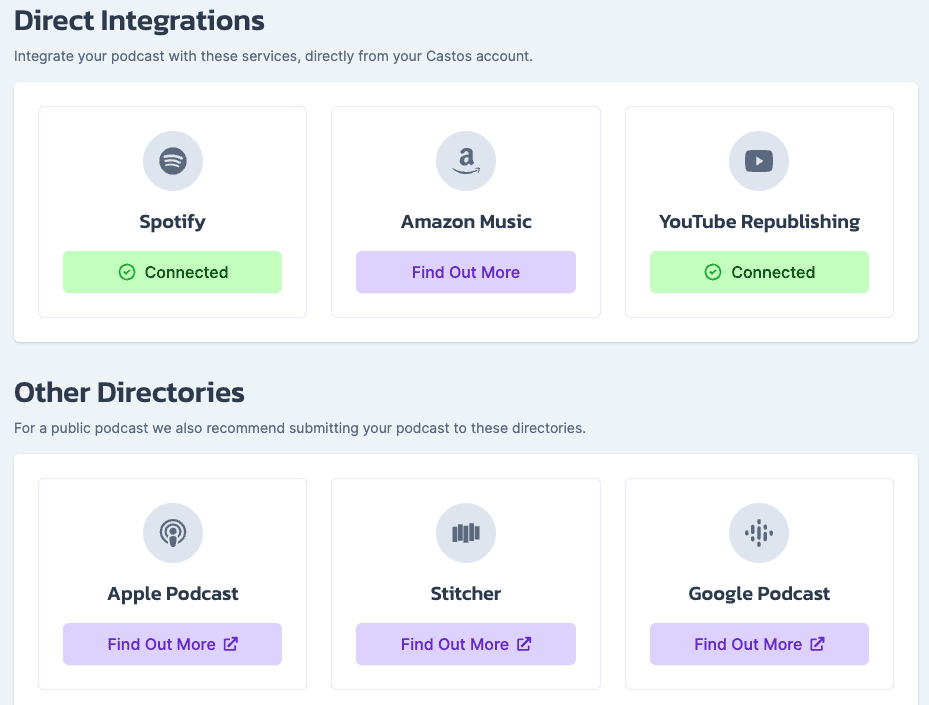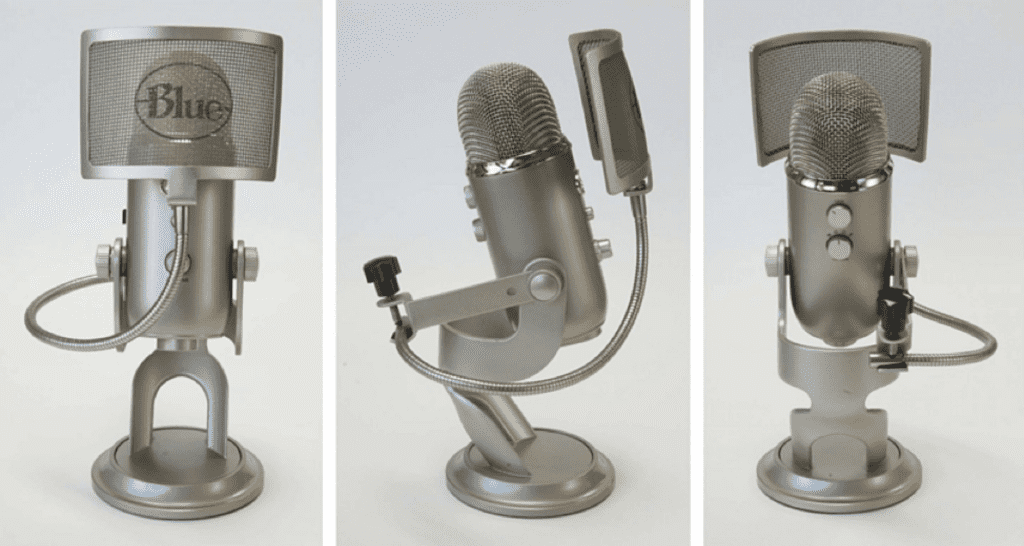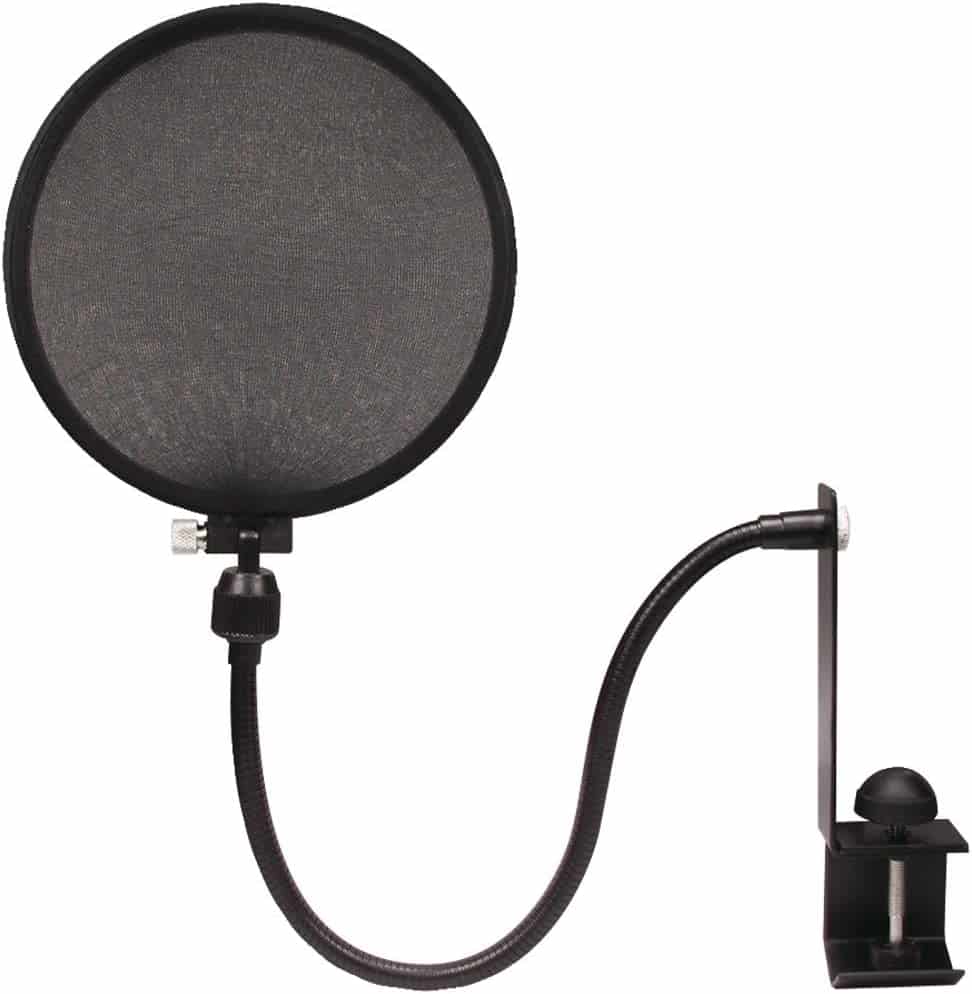Castos is a member of the Amazon Services LLC Associates Program. We may receive services from your purchase on Amazon.com, at no cost to you.
One universal truth of all podcasts is that great sound is important. Without it, the audience you’ve worked so hard to acquire will quickly abandon your show for someone else with better audio. And while most of us focus on the best podcast microphone for our shows, one important feature of podcasting apps is the pop filter.
Practice
Haven’t started your podcast yet? Before you dive in, check out our complete guide on how to start a podcast.
What is Pop Filter?
A pop filter is a thin piece of foam or mesh that sits between your microphone and your mouth.
It is designed to soften your plosives. Plosives are air bubbles you make when you make sounds like “P,” “T,” and “K,” as in “Please” or “Today.” A pop filter is your filter (speaker) on your podcast microphone to slow down this pop.
Here’s a preview of what those plosives look like in audio editing software like Adobe Audition:

See that big, pronounced spike? That’s a plosive. You should (try to) remove it from the production process of creating an event. But with a pop filter in place, those harsh plosives don’t make it into your recording because they’re filtered out before they reach the microphone.
There are a few different pop filters you can use to improve the quality of the audio you capture for your podcast. Which one you choose will depend on the type of microphone you have, how you record, and where you are when you record.
Automatically publish your events to multiple podcast directories
With Castos you can send all your podcast content directly to directories such as Apple Podcasts, Spotify, Amazon Music, Stitcher, Google Podcasts and many more.
Meet your audience where they listen to the podcast!
No credit card required

Different types of Pop Filters
A lot of the decision about what kind of pop filter to use comes down to the microphone you’re using. Speakers like the Samson Q2U or the Shure SM7B with a circular screen will accept both foam insulation and flat style filters.

If you are using a peripheral microphone like the popular Blue Yeti pictured below, then a foam cover will not fit your microphone and you will want to use a nylon mesh type filter. .

Advantages of foam insulation
One of the advantages of the pop filter type of air foam is that it is small and does not clog. Trusted by journalists in the field for decades, this pop filter does a great job of reducing all kinds of noise outside of your microphone.
These are also well maintained. Fit snugly over your speakers, there is almost zero chance that they will move during your recording, even if they fall.
Disadvantages of foam air screens
Although the foam air screen type is great, it doesn’t work for all types of speakers. For example, it doesn’t help if you’re using a peripheral speaker like the popular Blue Yeti. Additionally, some audio experts don’t believe air screens reduce plosives as effectively as nylon soap filters.
Advantages of nylon mesh pop filter
Nylon filters are the gold standard in pop filters when looking around a recording studio. This is because they achieve the best of being universally adaptable to all types of microphones, changing to suit the style and mood of the artist. , and removes the good sounds (and doesn’t keep the good sounds we want to capture). ).
Disadvantages of nylon mesh testing
An articulated “gooseneck” arm that allows you to place a mesh-style filter between the microphone and your mouth can sometimes be annoying. Depending on how your speakers are configured and your machine’s setup, you may have to do a bit of fiddling with this arm to get the pop filter in the right place.
Also, nylon filter mesh is not very durable. They can break or tear easily if they are dropped or dropped with a damaging object.
Installing your Pop Filter
Once you’ve selected the type of pop filter you want to use (which, as we said, comes down to which one is best suited for your podcast microphone), then it’s time to apply it.
If you’ve chosen an air-foam style cover, it will fit over the end of your podcast microphone. These are great because they don’t move around and get in the way while you’re recording. This is especially useful if you’re recording video for your podcast and don’t want a big pop filter screen blocking your video.
If you opt for a flat nylon screen type filter, they often use an adjustable arm that attaches to your speaker or microphone. This attachment point is usually near where your microphone stand connects to the boom arm if you are using one.
How to use the pop filter
Once your pop filter is installed, you’re ready to go. Just make sure it’s stable and doesn’t move while recording. This can create distortions during your recording, which is something you want to avoid when getting a pop filter in the first place.
Podcasting just got a lot easier
With Castos, you’re just a few clicks away from launching an impactful podcast for your brand.

Our 3 favorite pop filters

Nady MPF-6
The Nady MPF-6 is our top pick due to its excellent combination and reasonable price. In addition to the double mesh nylon screen, it has a clip-type attachment on your boom arm so you can mount this pop filter wherever it suits you.
The only downside is that the frame is plastic, so it may not lift as well as some metal ones.

Stedman Proscreen XL
Unlike Nady’s nylon filter, the Stedman pop filter is made of high quality aluminum, so it is more durable.
In addition, the Stedman Proscreen XL has a sided opening in the mesh to allow passing through the sounds you really want to capture with your podcasting machine, while still reducing those unwanted sounds.

Application name A58WS
The technology is not a pop filter but the air front of the microphone cover is composed of foam giving you a low profile option for front speakers like the Samson Q2U or the Audio Technica ATR2100x similar models.
As an added benefit, if you’re podcasting outdoors or traveling with your podcast setup, this is a great phone option for our folks on the go.
Whether you use a conventional mesh filter or foam insulation, the goal is the same: to destroy the strong sound that comes from our speaker system. Doing this will save you many hours (and headaches) in the post production process of editing your podcast.
Podcasting just got a lot easier
With Castos, you’re just a few clicks away from launching an impactful podcast for your brand.


0 Comments